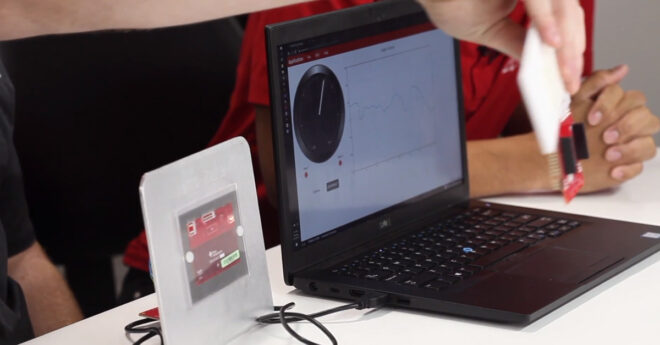Out of all the various Bluetooth® solution areas, Bluetooth Location Services has been one of the fastest growing for several years. With a CAGR (compound average growth rate) estimated at 32 percent (according to the 2021 Bluetooth Market Update), the solution area is clearly enjoying heightened awareness and experiencing accelerated adoption.
Bluetooth Low Energy (LE) is a versatile technology that enables everything from asset tracking and indoor navigation to safe return solutions, with digital keys being one of the more recent innovations. Digital keys can be adopted for everything from personal use to commercial access control to car sharing and company vehicles.
I recently had the opportunity to speak with Tomoki Shibata from Jigowatts and received a wealth of insight into how Jigowatts is using Bluetooth technology to bring their smartphone-based digital key solution to automobiles.
Q&A With Tomoki Shibata From Jigowatts

What kind of digital keys has Jigowatts been developing?
We used Bluetooth® technology to develop VirtualKey, an aftermarket smart lock device for vehicles. The onboard unit doesn’t require a cellular line, and customers can use their smartphones to lock or unlock their vehicles and start the engine. VirtualKey is currently being used by a wide variety of car rental and car sharing services and is also being incorporated by the car-loaning industry.
How has your Bluetooth Digital Key solution made car sharing possible?
The system is composed of an onboard unit, a smartphone with the dedicated app installed, a vehicle management server, and a key server for issuing a one-time code for command execution. For example, if you launch the app and tap the unlock button, the vehicle management server checks the user’s authority and, once that is verified, prompts the key server to issue a one-time password (OTP) that is good for one use of the onboard unit.
The key server issues the OTP, passing it to the vehicle management server. The vehicle management server combines the OTP with the unlock signal and other commands into a set that it signs digitally with its own digital certificate. It then encrypts the bundle and returns it to the app.
The app transmits the commands it receives to the onboard unit connected to the smartphone via a Bluetooth® signal. By combining the commands and then verifying the digital signature, the onboard unit verifies that the commands have been issued from the vehicle management server specified at the time of shipment. Then, after checking the OTP signal issued by the key server and an OTA generated inside the onboard unit to make sure that they are the latest, unexecuted commands, it unlocks the vehicle.
Bluetooth® technology is a realistic choice for aftermarket digital keys since it uses very little standby power and involves no communications costs.
What do you consider to be the reliability and security requirements of wireless technology in the development of digital keys?
The system calls for the kind of confidentiality and integrity that will prevent the execution of unauthorized commands. It also needs to enable first-time users of car-sharing applications to use the system with nothing but a smartphone. Bluetooth® technology ensures compatibility and convenience for the user, and the Bluetooth equipped authentication technology ensures confidentiality and integrity.
What are the advantages of using a smartphone as a digital key?
Not having to carry anything else. Dedicated devices are an inconvenience when they’re not in use, and there is always the risk that they might be misplaced.
Why did you choose Bluetooth technology over other wireless technologies (e.g., UWB) for positioning systems?
The clincher was the iPhone’s support for Bluetooth® Low Energy (LE). We knew that the technology chosen as a standard for iPhone would invariably spread to Android and other devices and that parts would likely become cheaper as a result. Another attractive point was that we wouldn’t need to equip the onboard unit with a cellular line, which lowered operation costs.
What role will Bluetooth technology play in the future of keyless entry and digital keys for the automotive industry?
I think that Bluetooth® technology is a realistic choice for aftermarket digital keys since it uses very little standby power and involves no communications costs — installing multiple antennas to adapt to alternative technologies is simply not a realistic way to cut costs in aftermarket solutions. Where new cars are concerned, it is likely that Bluetooth Digital Key solutions will also combine cellular, UWB, or other technologies to provide greater usability, particularly in higher-end vehicles. However, Bluetooth technology will continue to play a central role in those digital key solutions.
![]()
FEATURED PRESENTATION
Car Access With TI Connection Monitor
Learn how the TI Connection Monitor is used to monitor Bluetooth® Low Energy communications to estimate the distance between the connection monitor and Bluetooth LE enabled devices in applications such as car access or remote keyless entry.
























